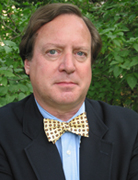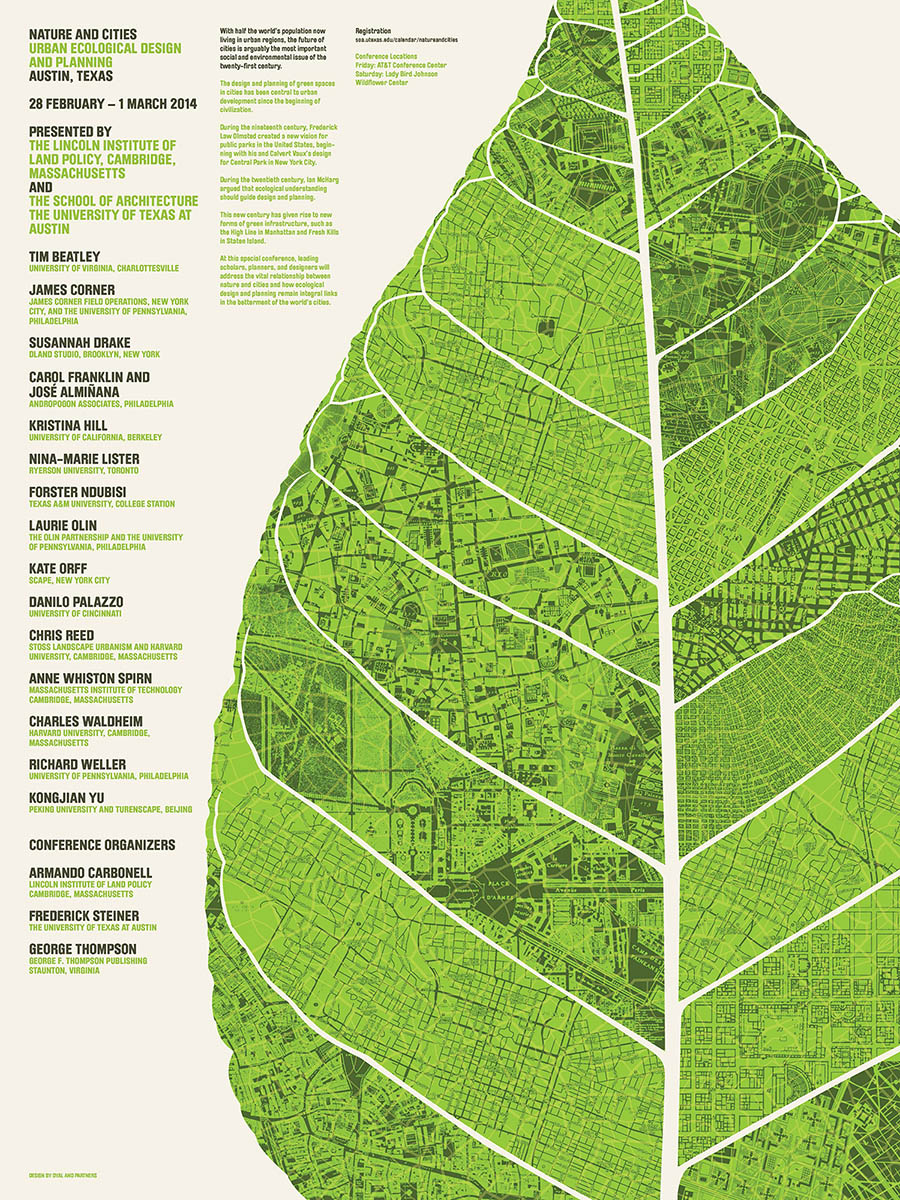About half of the world’s population currently lives in urban regions, making the future of our cities a topic of high priority in terms of social and environmental issues. That’s why this weekend, some of the chief thought leaders in the fields of urban design, development and planning are convening in Austin, Texas, for the Nature and Cities conference. There, they’ll be discussing the integral relationship between nature and urban ecological design and planning.
Ecological understanding has taken a front seat in the world of urban planning, and the conference’s organizers hope to foster lively discussion around how nature and cities work together.
Open Voices spoke with with Armando Carbonell, one of the organizers of the conference and a Senior Fellow and Chairman of the Department of Planning and Urban Form at the Lincoln Institute of Land Policy, about his perspective on the interaction between nature and cities — as well as his hopes for the conference.

Open Voices: For many, nature and the city seem to be opposing forces. How do you approach breaking down that concept as an urban planner?
Armando Carbonell: That is the conventional way that people think about it, that this is a battle between cities and nature; that everything that’s urban is anti-natural and that you really should keep these two things as far apart as possible. Throughout my working life I have rejected that dichotomy and yet there are potential conflicts and tensions in these two ways of looking at the world. We resolve that in part by thinking about density and how cities are potentially good ways of being homes to lots of people. Living relatively densely in good cities has great environmental benefits. It also presents opportunities to think of cities in new ways.
It’s a combination of containment, which is to say not spreading the built environment and urban development everywhere, but also thinking about the city as a good place to live and thinking about density as a good thing. This is very hard for many people to grasp because density is equated with congestion, pollution and crowding. A lot of research that we’ve done shows how density can work to both create great places, which people will find healthy and enjoyable to live in, but also strikes a better balance in terms of the way we use land and the way we use resources.
One key is thinking of density as a positive thing in terms of breaking down this opposition. The other is not thinking of this either/or situation; green or gray. There can be a lot of green in cities, in fact green in many aspects, and those include green spaces that are serving multiple functions; parks, places for health and recreation, green infrastructure, dealing with storm water, dealing with air quality, cooling places that are hot. There may be opportunities to open them to up not just work better but to create much more attractive and satisfying environments for people as part of a green, open space system.
Open Voices: How in your career have you used ecology to guide your work in design in urban planning?
Carbonell: I’ve had a few jobs that have defined what I do. I’ve taught quite a bit and all my teaching has been a combination of urban and environmental; either urban and environmental analysis, urban and environmental policy and urban planning that includes a real emphasis on the natural side of things. But in terms of practice and jobs, I worked to implement something called the Connecticut Plan of Conservation and Development back in the 1970s, and this was thinking at a large scale for the whole state about where new development should be located and how it should be shaped and also how to protect and restore the natural systems around the urban development. It was a progressive plan that understood that we couldn’t continue to spread development everywhere in this small and very urbanized state, a state that still had functioning trout streams. It’s a plan that has persisted and been updated and I revisit it from time to time and I think it was a great introduction as a professional to both thinking on a – at a larger scale but also thinking together about those issues of environment, conservation and urban development. I was in the Department of Environmental Protection and we were worried about environmental quality issues, air pollution, water pollution and understanding that how we use land is a fundamental way of dealing with environmental issues like air, water and pollution was the key insight to that early part of my career.
Then later, after some more concentrated academic work I ended up setting up the Cape Cod Commission, which was a regional planning agency on Cape Cod that was trying to deal in a similar way with the pressures of rapid development, very fragile resource situation, sole source aquifer, very difficult ground water protection issues, and also a wonderful place with still its own wilderness piece that’s kind of amazing, and at the same time an urban place really with a growing population.
Thinking about how to keep that together in a way and make it work was my job for a number of years and then I moved on to the Lincoln Institute of Land Policy where we take a more educational view of these things, but focus on essentially the same topics, thinking about cities in terms of what makes them work for people, but also how to understand them in the context of a changing environment, particularly with the challenges of climate change and other unpredictable or uncertain future conditions that we have to live with.
Open Voices: Nature Sacred is an advocate for city-wide natural systems (such as green infrastructure or urban forestry) that integrate the micro-scaled places that offer nearby, intimate, or personal opportunities to experience nature in cities. How can micro-sites be designed and incorporated into the bigger picture, and raised to the systems level in cities?
Carbonell: I think they’re very important, and I take what I call a fractal view, which is to say that every little bit is a kind of a microcosm of the larger system in that they all need to connect up and be thought of as part of as one big system. From the perspective of experience, of course, you may not visit Central Park every day, but you may have some flowers on your windowsill that you see every day and that may make a difference in your life or a small park on your street or in your neighborhood. I think the importance of the micro green spaces can be overlooked because they may seem trivial but the other – apart from the individual experience and the positive role that they play in people’s lives in – just as Central Park does but just in a more intimate and maybe every day way, they also add up collectively and need to be thought of collectively as a system that is providing certain functions. So lots of small green spaces can act as a storm water retention system, for example. Thinking about the little spaces as part of a larger green infrastructure is somewhat recent discovery. We can add up in some way and they can be planned for as part of a larger system and they can replace some of the more conventional engineered systems of pipes and treatment plants and actually function better and more economically.
I think the value of smaller green spaces is in the aggregate as part of what I would call an eco-structure, not just infrastructure, but a kind of set natural processes that are at work in the city, or in some cases, just mimicking natural processes that can clean water, deal with flooding, contribute to air quality as well as provide all of the social and health benefits that we know come from being in beautiful green spaces.

Open Voices: What kind of innovative projects have you been hearing about lately that you really think are taking things to the next level?
Carbonell: There’s so much going on, it’s really a terrifically productive time and there are just many categories of projects out there. Some of them are dealing with things that could be considered environmental disasters, the Fresh Kills Landfill in New York, for example, is now, over many years, being converted into a fantastic park that’s also part of the whole urban system. Places that are being reworked with sea level rise in climate change in mind; I’m thinking of Treasure Island in San Francisco where a kind of green zone around the island is being created that can flood and that will essentially protect the development on the island. So resilient systems that are aimed at addressing or anticipating future conditions like rising sea level or bigger storm surges and other events that we see coming.
There’s a very interesting project we’ve been following called Rebuild by Design that has come out of the task force that President Obama appointed after Hurricane Sandy to deal with the recovery, and it’s thinking more long-range about adaptive approaches that could be applied in ten specific projects. So that’s one big set of things happening. Just to name one other, there’s the Trinity River in Dallas, Texas, a terrific restoration and rehabilitation project that is treating a river that had been regarded as a problem and seeing it much more as an asset in developing it as a centerpiece for that whole region.
But there are probably 100 projects, and one of the things I anticipate at the conference is that we’re going to see lots of pictures of really exciting work that’s underway. Then there are smaller – I’m sure you’re familiar with the High Line, for example, in New York City, which inch for inch has had a huge impact. It’s a long project but it’s not a wide project and by the same token it’s had a huge impact and it’s a wonderful experience. It’s really had a disproportionate effect on urban development in that city and has inspired many others to think about how these relatively specific interventions can just have multiple consequences and a really important role in cities.
Open Voices: What types of topics are going to be covered during the sessions at the Nature and Cities conference?
Carbonell: It’s hard to answer the exact question because the conference isn’t organized so much around topics as it around a set of individuals who are the leading practitioners and thinkers around cities and nature as a general matter and they each have a very particular perspective…It covers everything from projects that have been done, theories about projects that should be done and then people who have taken a view of the whole sweep of the development of the field. My sense is there’s going to be some really heated discussions around this, not just on stage, but probably following on after the public program is over.

